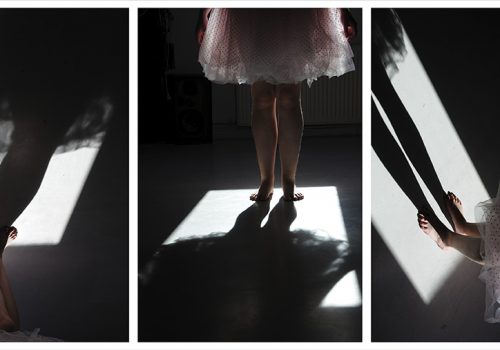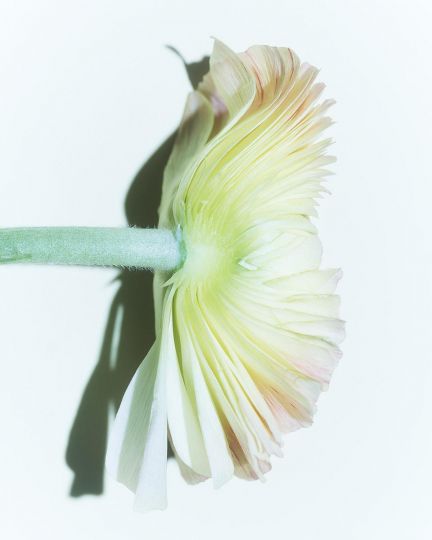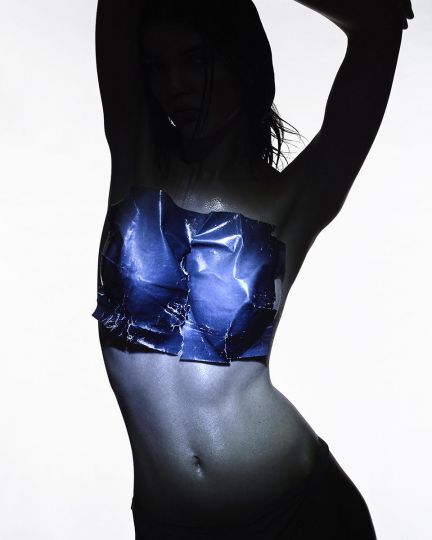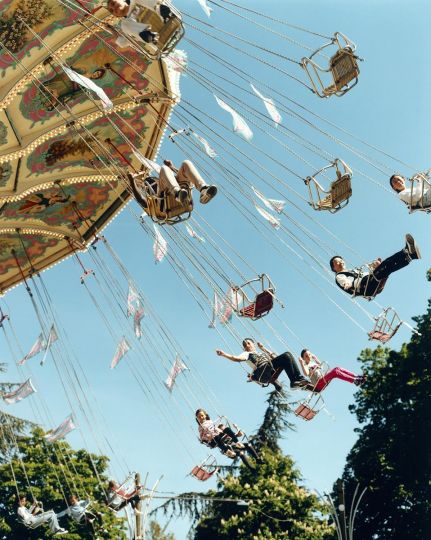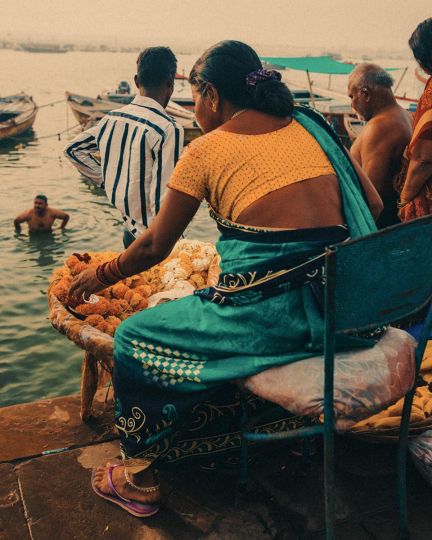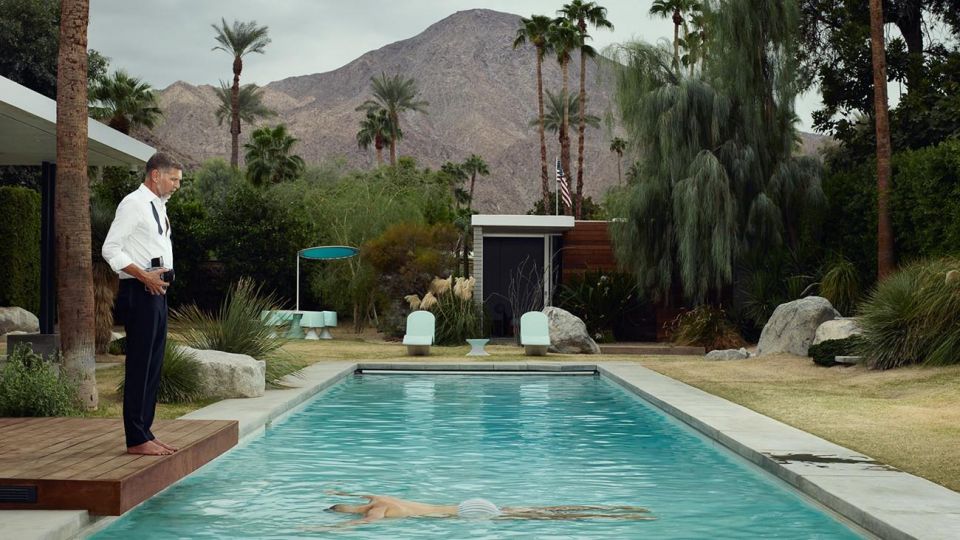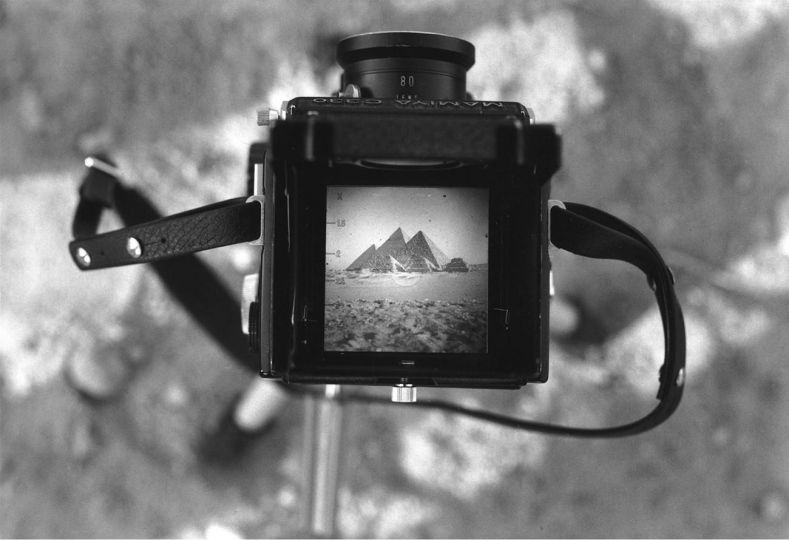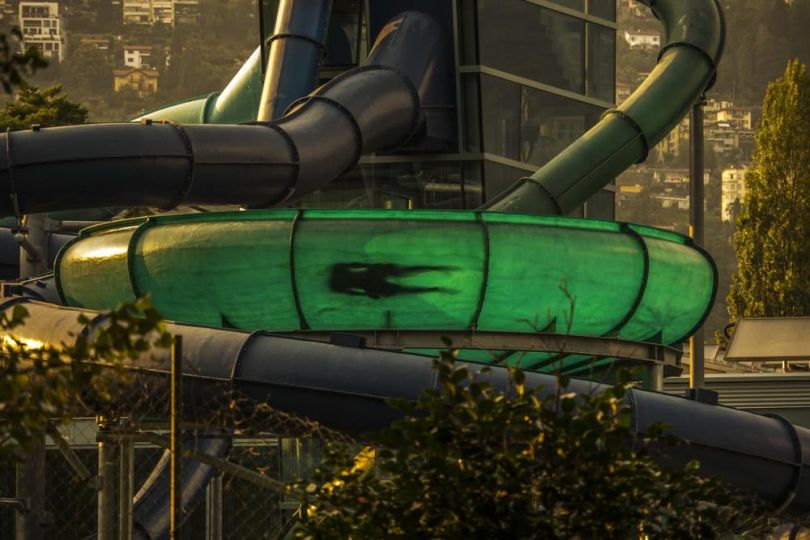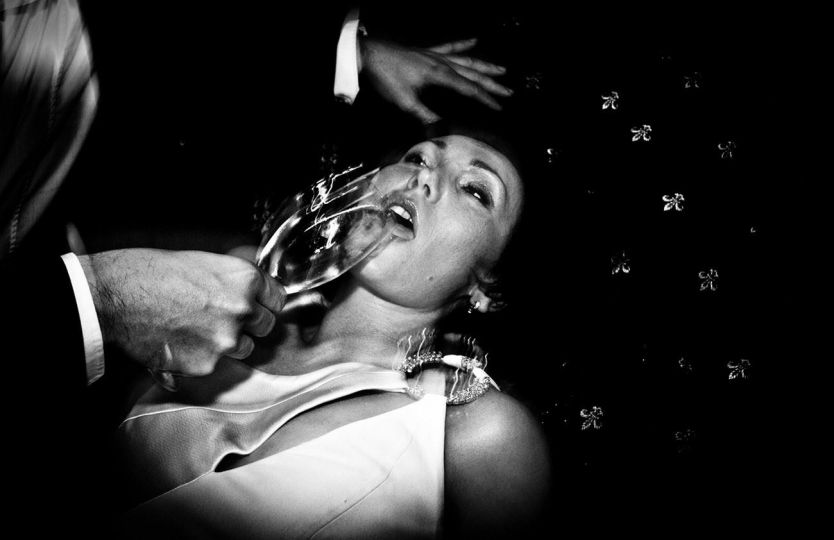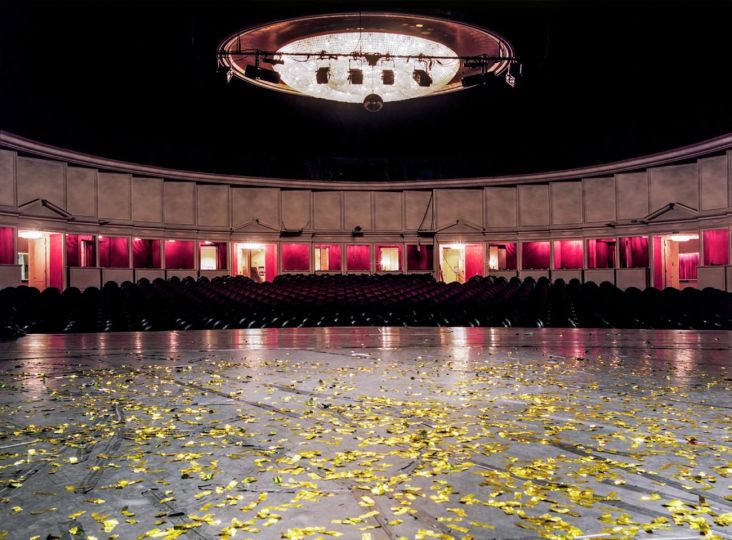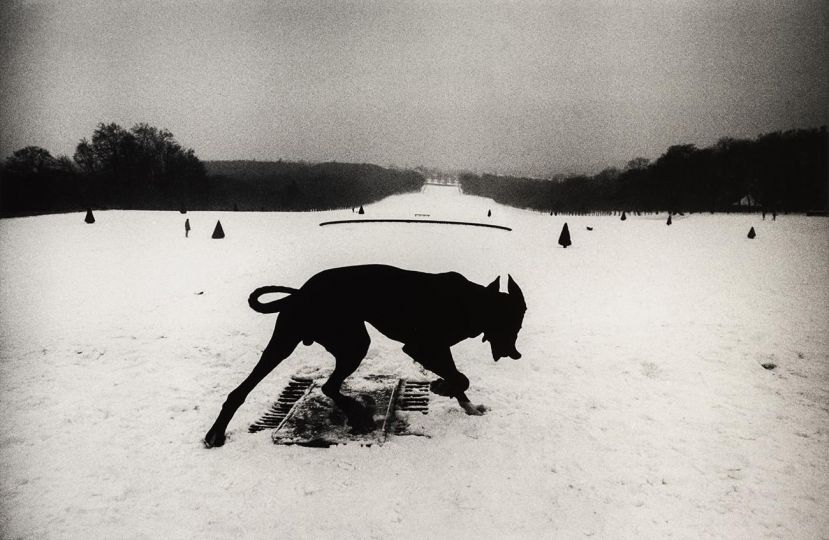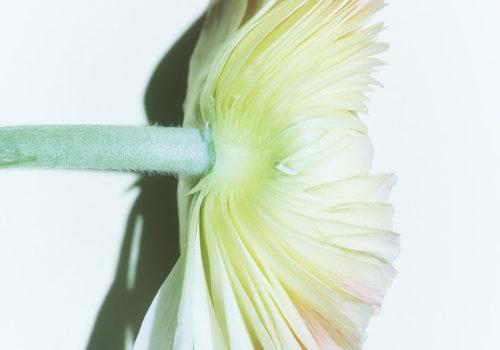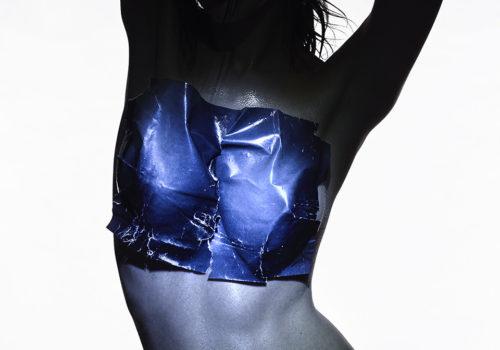Virginie Marnat observes the world around her attentively then creates images that question social behaviour, aspirations and illusions. She produces ambiguous representations of reality that we find unsettling as viewers. Her multi-faceted photographic style allows her to highlight the vanity inherent in the models the individual feeds off, revealing postures that are really just appearances, unveiling the real in the invisible.
Marnat’s photographs adhere to the real. They are based on the meticulous, detailed observation of the everyday, examined as a whole. Her approach is never one-tracked, throughout her series, she questions appearances making no demands or denunciations. These realistic scenes, whether documentary or fictional, often give rise to unsettling feelings for the viewer who is confronted with their realism. Her posed portraits, the games the models play voluntarily, the way nature is captured at distinctive moments, all depict the vanity behind the desire to ‘appear’ as an essential part of the individual. Once this reality is made visible, appearances flake away to reveal the truth. Her work is often serial, bringing a subtle plurality of approaches to a subject, in the exploration and individualisation of the same situation.
It was in 1992 that Virginie Marnat first laid the foundations of her process with
“Les Filles de Dijon” [The girls of Dijon] series. We recognise each one of these girls, we’ve seen them all before, we know them, maybe we even are one of them, with their distinctive attitudes and outfits. Each one affirms an identification with a model rather than their own singularity. Their poses are decontextualized in front of the neutral backdrop of the studio. Distance is added by the documentary-like use of black and white. However, if we look longer, the systematism does not come from the repetition of the photographer’s method, unsettling similarities appear, and the pictures take on another aspect.
The examination of women’s aspirations and representations features regularly in Marnat’s work. She photographs scantily dressed women, outside, at night, lit by what could be the headlights of a car, in often lascivious and provocative poses. The title of the series reveals the set up: “Toutes mes copines sont des putes” [All my friends are whores] (1999). Virginie Marnat asked women to whom she was close, to pose as prostitutes, with the attending outfits and accessories. Without giving in to perversion, each friend reveals a part of their personality while revealing their own projections. Some play with the camera, reproducing poses of transactional sex. Others, less comfortable in the pose, reveal the tragedy of the situation and the brutality of the representation. The title is humorous, and can set off a certain reaction in the mind of the viewer. The realisation that it is a game puts a stop to the moral reprobation and the voyeurism that is often associated with reportage on prostitution. The fake, fictional character of the work reflects the viewers gullibility or wakes up their critical senses.
In 2000, Marnat claimed that “La Guerre de Troie n’aura pas lieu” (2000) [The Trojan War will not take place]. During a residency in Goteborg in Sweden, Marnat depicted three barely-dressed men, wearing only underwear or trousers, carrying plastic weapons and shields. The men are not afraid of ridicule in this grotesque depiction of fake Vikings fighting an invisible foe, instead they play along. Their efforts seem to us to be in vain, so the battle really doesn’t take place.
In “Sans titre” (2018) [Untitled], a young woman poses against the light, placing various women’s outfits in front of her body and adopting the attitudes she associates with these dresses. She vivaciously brings the characters to life, in a barely visible interior, opening on to a vast blue sky. The realist backdrop is a blend of the inside and the outside, as the window opens on to the world. There is a feel of ambiguity, where everything is interlinked, realism and theatricality, interiority and appearances, being and appearing…
Virginie Marnat’s photographs are built with precision and harmony between the present notions, so they become visually self-evident. The artist creates representations that oscillate between the plausible and the imaginary through the analysis of all kinds of images, the potential of the photographic medium and her observation of the world. The strong connections she has to painting is surely a contributing factor. Using light effects, contrast and materials, her pictures reveal a reality that isn’t visible. The lightness and luxury of silky fabrics blended with fragments of a feminine silhouette in “Bleus” (2018) [Blue], the strange, unreal landscapes of a twilight scene “Un jour tu verras” (2005) [One day, you’ll see] … When Virginie Marnat records what she sees, she bestows a certain mystery on it. She makes the invisible visible or invites us to reconstitute the unrepresented in our minds. Photography becomes an allegory, a painting, that includes all of the dimensions of the image in one picture. When she literally constructs and directs her representations, the relationship to the model, the arrangement of the accessories, the lighting, she connects with the materials, not unlike a painter connecting with the brush and paint on the canvas. All of these elements, whether taken from reality or orchestrated, give rise to visual units, illusions of a reality that the viewer is invited to join.
The ambiguity is present in unexpected ways that could be seen to be banal or traditional. The “Arbres” (2018) [Trees] series features trees that seem to have been photographed as people, from top to bottom, as living beings emerging from the fog. The veiled atmosphere requires us to consider them as a whole, both above and below ground.
In “Les guerriers” (2012) [Warriors], Virginie Marnat creates a fable-like symbolic representation where young men draped in fabric lie with their eyes closed, posing languorously, in a blinding light. The characters are devoid of context, seeming to sleep or starting to wake. The lack of any notion of space or time gives the scene a universal, timeless feel. The image is direct, its clarity imprinting on the mind, revealing the depths that resonate inside every one of us.
Virginie Marnat continually questions the veracity of the photographic image, creating visual allegories and oxymorons, with grace and subtlety, yet leaving us to our own devices. The unsettled feeling we get deep inside comes from lifting the veil on the complex illusions that are part of our make-up.
Virginie Marnat lives and works in Dijon. After graduating in fine art from the Dijon Beaux-Arts, she went on to study photography at the Brooks Institute of Photography in California in the United States. In 1999/2000, she spent time as artist-in-residence in Goteborg in Sweden. Her work features on the collections of the Consortium de Dijon, the Frac Bourgogne, the Fairpath Foundation (United States).
Caroline Lossent, Musée Nicéphore Niépce
Virginie Marnat – D’un jour à l’autre (From one day to the next)
February 16th to May 19th 2019
Musée Nicéphore Niépce
28 Quai des Messageries
71100 Chalon-sur-Saône

